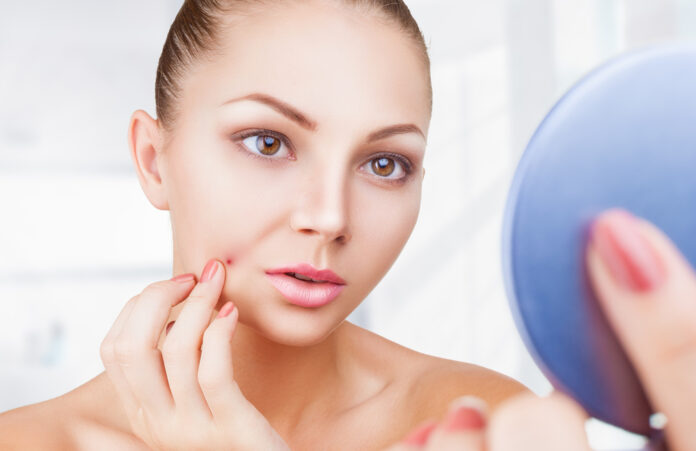Age spots, also known as liver spots or sunspots, are a common sign of skin aging. These flat, oval areas of increased pigmentation typically appear on sun-exposed areas such as the face, hands, shoulders, and arms. While they are usually harmless, many seek treatment to achieve a more even complexion and youthful appearance.
Understanding Age Spots
Age spots result from an overproduction of melanin, the pigment that gives skin its color. Prolonged sun exposure accelerates melanin production, leading to the accumulation of these dark spots on the skin. Genetics and artificial UV sources like tanning beds can also contribute to their development. It’s essential to consult a dermatologist to distinguish age spots from other skin conditions, such as melanoma, to ensure proper treatment.
Treatment Options
Topical Treatments
Over-the-counter creams and prescription medications can help lighten age spots over time. Products containing ingredients like hydroquinone, retinoids, vitamin C, tranexamic acid, niacinamide, or kojic acid are commonly used. These substances work by inhibiting melanin production and promoting skin cell turnover.
- Hydroquinone Creams: Often prescribed to lighten hyperpigmentation. Consistent application over several months is required.
- Retinoids: Promote skin renewal and collagen production.
- Vitamin C Serums: An antioxidant that protects against tissue damage and improves skin tone.
It’s important to avoid creams containing harmful ingredients like mercury, which can damage your health. Always consult a dermatologist before starting any new treatment regimen.
Medical Procedures
For faster and more significant results, dermatological procedures are available:
Laser and Intense Pulsed Light Therapy
Laser treatments target melanin with light energy, effectively breaking up pigment particles. This method offers quick results with minimal damage to the skin’s surface.
Chemical Peels
Applying a chemical solution to exfoliate the skin can reduce the appearance of age spots by removing the outer skin layers. Multiple sessions may be needed for optimal results.
Microdermabrasion
This procedure gently sands the skin to remove the thicker, uneven outer layer, promoting new skin growth that can reduce age spots. It’s often combined with chemical peels for enhanced effectiveness.
Cryotherapy
Cryotherapy involves applying liquid nitrogen to freeze and destroy excess pigment, allowing the skin to heal and appear lighter.
Natural Remedies
Some prefer natural ingredients to address age spots:
- Aloe Vera: Known for its soothing properties.
- Niacinamide (Vitamin B3): Helps hydrate the skin and improve its health.
- Rosehip Oil: Contains antioxidants that can improve discoloration.
While natural remedies can be beneficial, their effectiveness varies, and they may not provide the same results as medical treatments.
Prevention Strategies
Preventing age spots is crucial to maintain an even complexion:
Sun Protection
Sun exposure is the primary cause of age spots. Implement these protective measures:
- Apply Broad-Spectrum Sunscreen: Use SPF 30 or higher every day, even on cloudy days.
- Wear Protective Clothing: Long-sleeved shirts, wide-brimmed hats, and sunglasses shield your skin from harmful UV rays.
- Seek Shade: Avoid the sun during peak hours between 10 a.m. and 2 p.m.
Skincare Routine
Maintain a consistent skincare routine to keep your skin healthy:
- Stay Hydrated: Drink plenty of water and use moisturizers suitable for your skin type.
- Gentle Cleansing: Avoid harsh soaps that can irritate the skin.
- Healthy Diet: Reduce intake of sugary snacks, alcohol, and greasy foods that can affect skin health.
Products to Consider
Incorporating the right products can enhance your skincare routine:
- EltaMD UV Daily Sunscreen: Combines hydration with UV protection, ideal for daily use.
- SkinCeuticals Blemish + Age Defense Serum: Targets aging skin prone to breakouts, helping to reduce age spots and improve skin texture.
Purchase EltaMD UV Daily Sunscreen
Buy SkinCeuticals Blemish + Age Defense Serum
When to See a Dermatologist
If age spots change in appearance or new spots appear, consult a dermatologist to rule out serious conditions like skin cancer. A professional evaluation ensures you receive appropriate treatment and peace of mind.
Conclusion
Achieving a more even complexion involves a combination of preventive measures and, if necessary, treatments to reduce the appearance of age spots. By protecting your skin from the sun and adopting a healthy skincare routine, you can prevent new spots from forming and keep your skin looking its best.
Note: The information provided in this article is based on resources from reputable organizations:


